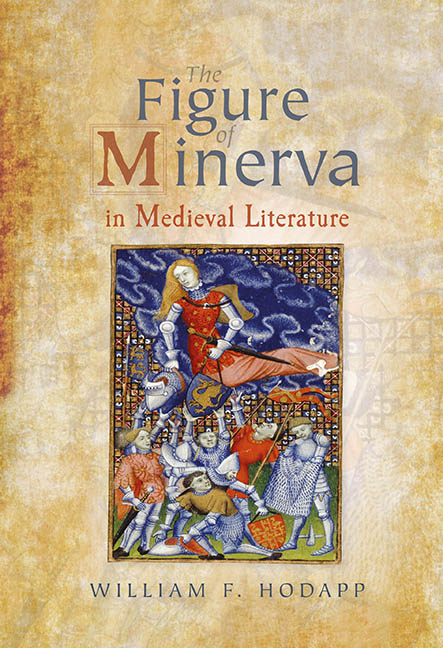Book contents
- Frontmatter
- Dedication
- Contents
- Illustrations
- Acknowledgements
- Abbreviations
- Introduction
- 1 The Roman Minerva and Elements of Medieval Classicism
- 2 The Sapiential Tradition: Minerva as Redemptress
- 3 The Martianus Tradition: Minerva as Mistress of the Liberal Arts
- 4 The Patrona Tradition: Minerva as Protectress and Benefactor
- 5 The Patristic Tradition: Minerva as Idol
- 6 The Ovidian Tradition: Minerva as Venus’ Ally
- Conclusion
- Bibliography
- Index
5 - The Patristic Tradition: Minerva as Idol
Published online by Cambridge University Press: 17 October 2019
- Frontmatter
- Dedication
- Contents
- Illustrations
- Acknowledgements
- Abbreviations
- Introduction
- 1 The Roman Minerva and Elements of Medieval Classicism
- 2 The Sapiential Tradition: Minerva as Redemptress
- 3 The Martianus Tradition: Minerva as Mistress of the Liberal Arts
- 4 The Patrona Tradition: Minerva as Protectress and Benefactor
- 5 The Patristic Tradition: Minerva as Idol
- 6 The Ovidian Tradition: Minerva as Venus’ Ally
- Conclusion
- Bibliography
- Index
Summary
The image of Minerva as idol finds its earliest expression in late antique Roman culture. Religious practice in the pre-Constantine Roman world was multi-form and various but with three key features: it tended to encapsulate religious ideas through deities associated with places and human activities; it employed a syncretic approach to religious expression, synthesizing ideas and practices encountered elsewhere with traditional Roman expression; and it emphasized public worship and respect for the city-state's ancestral deities – the pax deorum, or harmony between human and divine maintained through religious practice. As they encountered local religions through conquest, Romans typically allowed subjugated people to continue their religious practices if they did not challenge the pax deorum. Even Judaism sans political insurrection, for instance, though it rejected Roman polytheism, received a measure of toleration from the state because of its antiquity and ethnicity. In the main, pre-Constantine Roman religion was an eclectic, fairly tolerant, cultural phenomenon tied to public life. Universalistic monotheism challenged this multicultural approach to religion. With its advent in the Empire's early years and especially with its later ascendancy during the fourth and fifth centuries, Christianity particularly became a transformative force in Roman culture. Initially a marginalized sect of Judaism, Christianity separated from Judaism early in its development as Christians sought to proselytize among non-Jews, a mission that occasionally brought them into direct conflict with the state. Following the end of the Great Persecution (303–13) with the Edict of Milan in 313 and a period of civil conflict from which Constantine emerged as sole emperor in 324, Christianity moved from the margins to the center of the Empire: as they gained access to power, Christian leaders initially sought to marginalize in turn and then ultimately, and aggressively at times, to ban ancient religious beliefs and practices, diminishing and eradicating them in an effort to foster their religion's position within the state. In the context of this official shift from a pluralistic religious culture to the universalistic monotheism of Nicene Christianity, Minerva along with the other deities of the Roman pantheon became classified as an idol. From this early Christian viewpoint, the goddess as idol is possibly the most easily recognizable facet of the five-fold paradigm of Minerva imagery examined here. In this chapter, I explore Minerva as she appears in early Christian Latin poetry and fourth- and fifth-century apologetics.
- Type
- Chapter
- Information
- The Figure of Minerva in Medieval Literature , pp. 162 - 202Publisher: Boydell & BrewerPrint publication year: 2019



